Cranberries & Environmentalism at The Henry Ford
The Great Cranberry Scare
On November 9, 1959, Secretary of Health, Education and Welfare Arthur Flemming announced to the American public that a cranberry crop from the Pacific Northwest had tested positive for a herbicide. Growers began using aminotriazole to eliminate deep-rooted grasses and sedges from cranberry bogs in the mid-1950s, but the weed killer proved to cause thyroid tumors in test animals and left a residue in some cranberries. Even the Eisenhowers in the White House replaced cranberry sauce with applesauce at their 1959 Thanksgiving dinner.
Documenting this dangerous herbicide residue triggered the “Great Cranberry Scare” of 1959. The media coverage that resulted marked a turning point in modern American food scares and helped launch the modern environmental movement. Environmentalist Rachel Carson incorporated these events into her pathbreaking book, Silent Spring (1962).
This incident reminds us of the important efforts of one of our collecting initiatives at The Henry Ford: the environment. The Henry Ford received funding from the Institute of Museum and Library Services (IMLS) to increase physical and intellectual control of agricultural and environmental artifacts. Cranberry harvesting tools, including rakes and bog shoes for horses hauling produce from bog to processing facility, count among the artifacts made more accessible because of IMLS funding.

Rachel Carson testifying before a Senate Government Operations Subcommittee, June 1963. / THF147924
Harvesting Cranberries
Cranberries grow in peat or sandy marshes. In the earliest days of harvest, cranberries were picked by hand. This was a time-consuming and labor-intensive task. By the late 19th century, growers began the wet-harvest method, which involved flooding the cranberry marshes with up to 12 inches of water, allowing the fruit to float to the surface. Cranberries that make up processed foods like juices and relishes are wet harvested. An improvement to harvesting techniques, a wet harvest meant laborers spent less time gathering fruit from low vines. Further improvements arrived in the 1840s with the implementation of cranberry rakes. While wading in the bogs, harvesters used long-handled cranberry rakes to pull the vines of cranberries toward them without having to stoop down to gather the fruit.
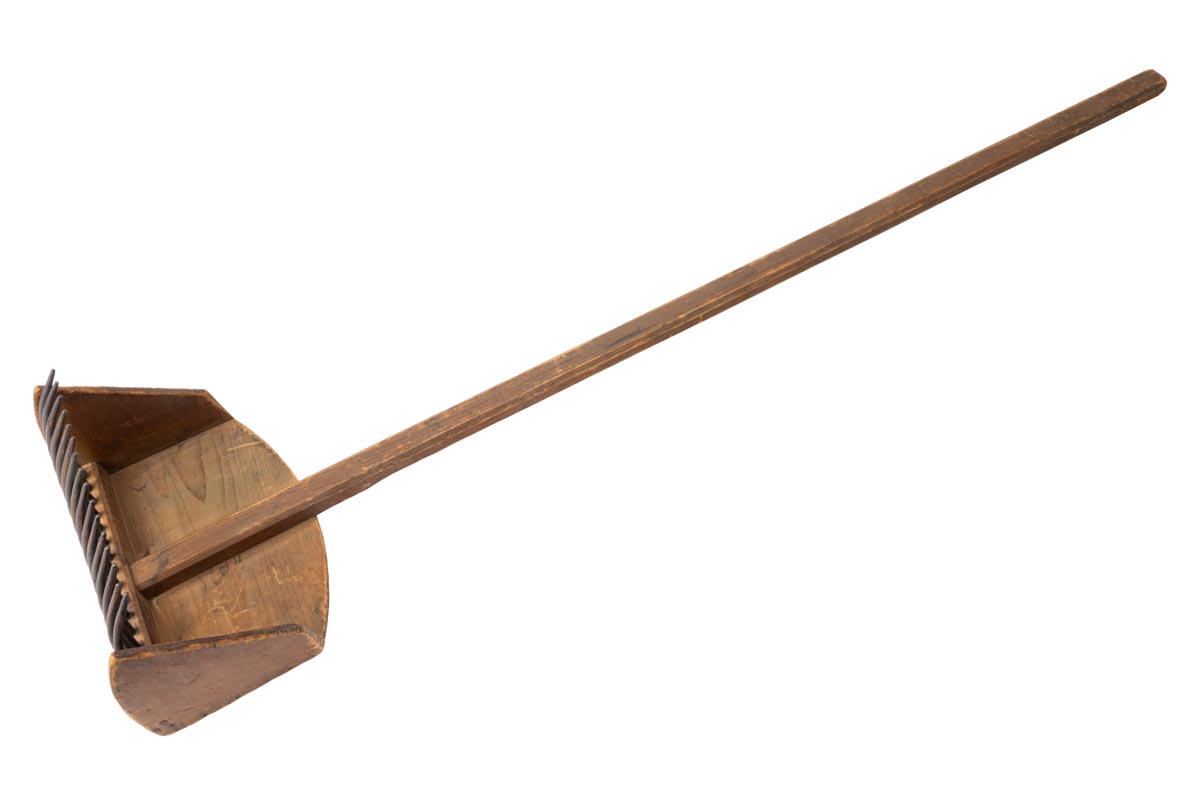
Cranberry rake. / THF197450
An 1886 trade catalog in The Henry Ford’s collection lists a cranberry rake like this one for sale and credits Massachusetts businessman Henry Glover with improvements to the tool. Glover’s Tool Shop in Dedham, Massachusetts, could hardly keep up with the demand for his cranberry rakes. After the 1840s, cranberry rakes like this one were widely used by cranberry farmers across the nation to complete a yearly wet harvest.

Catalogue of Seeds & Implements Woodenware, Parker and Wood, 1886. / THF713026
The final step of gathering cranberries comes when harvesters use large cranberry scoops like this one to gather the berries into collecting baskets.
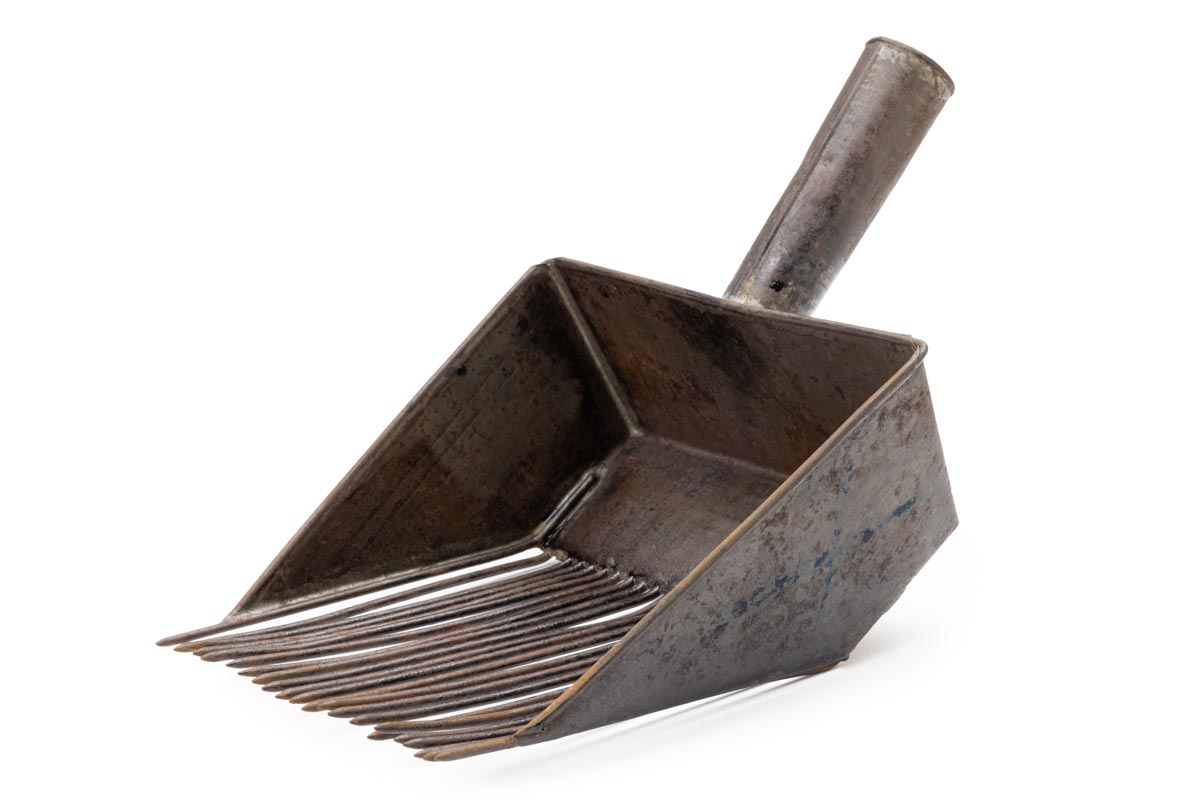
Cranberry scoop. / THF197423
After using rakes and scoops to collect cranberries, farmers often used horse-drawn carts to transport the fruit. During harvest season, farmers put bog shoes, also called "rackets," on the horses' hooves.. The shoes, made of wood with leather straps and metal cleats, helped horses keep their footing and prevented them from sinking as they hauled the cranberry harvest or worked at other marshy jobs. Thanks to IMLS funding, the treatment and research connected to these items reminds us of the complicated ties that cranberries have to environmental and agricultural history.
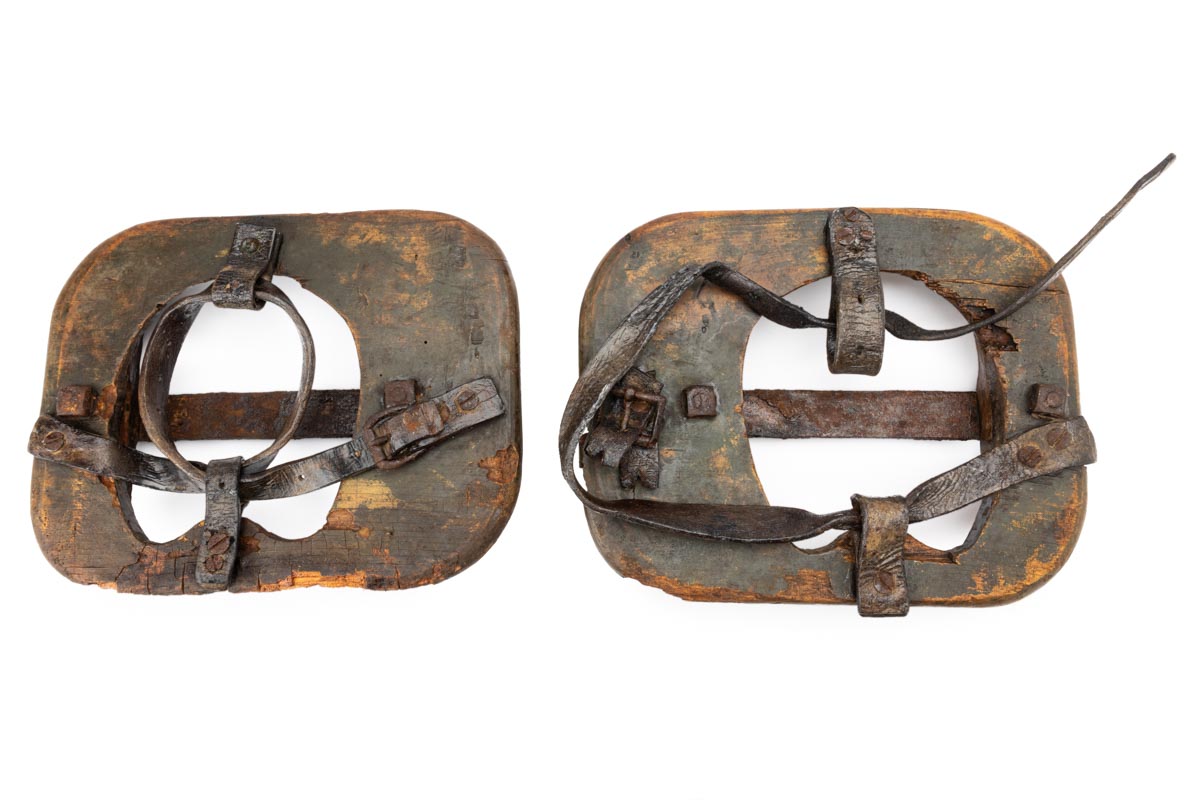
Pair of bog shoes. / THF197443
Cranberries and Cooking in Greenfield VillageBeyond the collections already mentioned, cranberries also make an appearance at Greenfield Village’s Eagle Tavern.
The Eagle Tavern was constructed in the 1830s as a stagecoach stop along the Detroit-to-Chicago route, in the village of Clinton, Michigan. The building was the first structure that Henry Ford moved to Dearborn for his “early American village” in 1927. Today, the Eagle Tavern serves as both a functioning restaurant and an interpretive site. Research confirmed that cranberries were a food staple by 1850, and cranberry recipes are a focus of the food program in the tavern. The Eagle Tavern Cookbook includes period recipes and adaptations of those recipes that are served to visitors today. You can try your hand at preparing cranberry muffins and cranberry sauce.
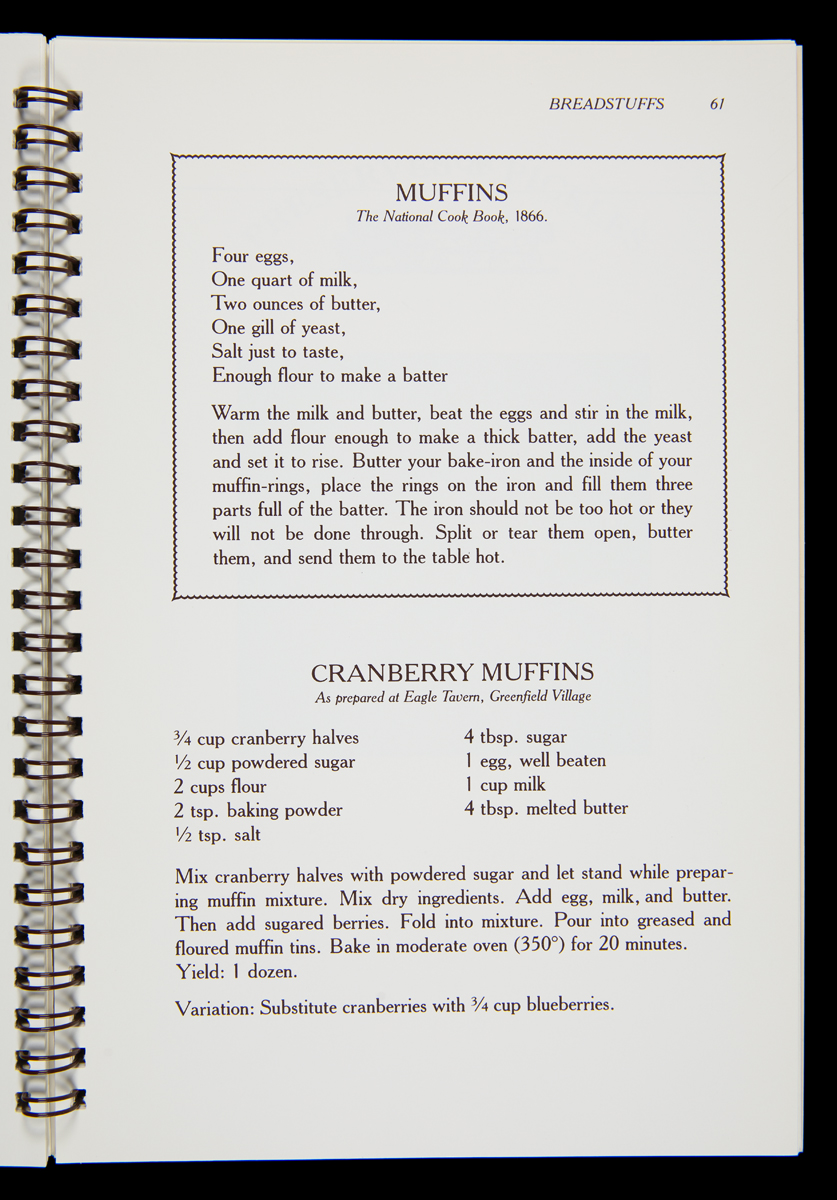
Eagle Tavern Cookbook, 1988. / THF712055
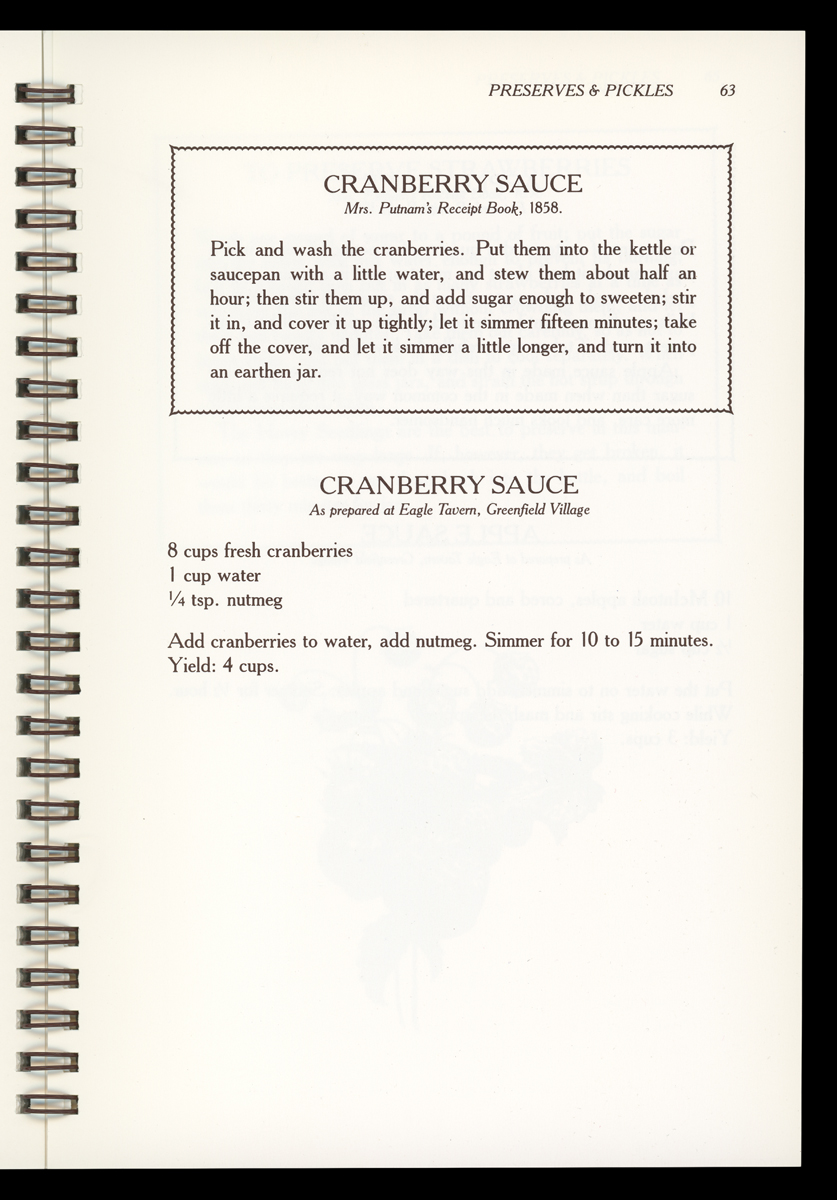
Eagle Tavern Cookbook, 1988. / THF712058
The cranberries used in the 1850s recipes were likely harvested with tools similar to the rakes, scoops and bog shoes processed by the IMLS team at The Henry Ford. Today, harvesting processes rely more on machines and less on hand labor, but the fruit remains a staple of baked goods and sauces, especially at holiday time.
The Henry Ford recognizes the many-layered histories associated with fresh, seasonal foods like cranberries and has undertaken an effort to incorporate more agricultural and environmental history into programming today. By better understanding the tools, harvesting methods and nationwide food scares that farmers and producers have adapted to over time, we are better equipped to teach new generations about this history and the importance of healthy, sustainable food sources.
Kayla Wendt is an associate curator at The Henry Ford, working on the IMLS grant project.
Sources:
Ames Plow Company. Illustrated Catalogue of Agricultural Implements and Machines, Carts, Wagons and Harness, Trucks and Wheelbarrows, Contractors' Supplies and Ice Tools. Boston: Rapid Printing Co., 1893. Pg 157.
Carson, Rachel L. Silent Spring. Boston: First Mariner Books, 2002.
Carson, Rachel and Freeman, Dorothy, edited by Freeman, Martha. Always, Rachel: The Letters of Rachel Carson and Dorothy Freeman, 1952-1964. Boston: Beacon Press, 1994.
Parker and Wood. Catalogue of Seeds & Implements Woodenware. Boston: Press of J.J. Arakelyan, 1886.
Cox, Robert and Walker, Jacob. Massachusetts Cranberry Culture: A History from Bog to Table. Charleston: American Palate, 2012.
Smith, Frank. A History of Dedham. Dedham: The Transcript Press, 1936. Pg 266.

